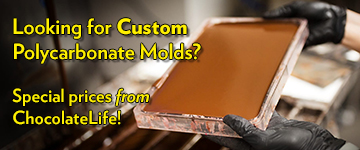So I have 1 day to figure this out! I am trying a different method of making truffles. I need my truffles to have a long shelf life so I can package them and sell them in stores without refrigeration. So instead of heavy cream, I am using Canola Oil. The only reason I switched to oil is because when I look at truffles sold on the shelf (like Lindt's Lindor Truffles), they dont have cream in them, they have some sort of vegetable oil. The problem is I just made 2 test batches and it was perfect when it was cold/cool, but when it hit room temp, it got super grainy! It was so smooth, just like the center of those Lindt Truffles, like a super smooth creamy chocolate "ganache like" center. (I realize its not a TRUE ganache, but I dont know what else to call it lol). But after it hits room temp, it feels like I dumped a cup up sugar in there. Is this a temperature problem? Is it something to do with the emulsification? Do I need to temper it or something?
The way I made them was:
Melted the Guittard Chocolate (12 ounces) in microwave.
Added 1/3 cup canola oil for one batch, 1/2 cup for the second (as a test)
Mixed well.
Put in freezer for maybe 5 minutes.
Moved to fridge.
Took it all out when it was firm.
Then when I would take a little spoon full, it was super smooth and pretty good! But after 20 minutes of sitting out, it was the worst "ganache" ive ever had.
Im pretty new to this (chocolate), but really love working with this stuff. I want to get good at it so bad, but cant afford to go to school right now. Does anyone know what Im doing wrong here?
Possible solutions that I can think of:
I have some Soy Lecitin... Should I put some of that in the mix?
Should I let it set at a different temp? Maybe for a day instead of 20 min?
Too much/too little oil?
Maybe some butter?
Temper it? (I have a Rev2 machine, and a Mol de art melter (6kg, havent used it yet)
Ask the pros? (:
Any help would be greatly appreciated, and I wont forget it either!
Thanks!
Ryan
updated by @klassy: 04/11/25 09:27:36

